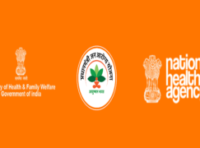With the onset of the pandemic, the farmer community has largely suffered major losses. Bearing in mind the plight of the farmers, the Centre may finally shift onto the Direct Benefit Transfer mode or DBT for offering farmers subsidy which will be effective from the Fiscal Year 2022.
This Department of fertilisers and the Ministry of Agriculture are working out the details of the specific DBT scheme which may be announced in the Budget for FY22.
Amount in question
Farmers essentially require fertilisers to gain ample produce, but fertilisers are expensive, and good quality fertilisers even more so. According to an estimate by the fertiliser department, on average, a lump sum of ₹5,000 to ₹6,000 is required to be transferred to each family annually in the form of fertiliser subsidy.
This financial support offered to the farmers will be offered in addition to the income support offered of ₹6,000 annually, which is already being given to farmers under the implementation of the Pradhan Mantri Kisan yojana.
The Centre, for the seamless implementation of the scheme, has earmarked a little over ₹70,000 crores. Over 14.6 crore farmers who have an average farm size of 1.08 hectare are the intended beneficiaries of the scheme.
Objective of the scheme
The main objective of offering this financial subsidy to farmers is simply to offer farmers peace of mind and to discourage rampant or unscientific use of fertilisers and eventually reduce pilferage.
What does this mean for the farmers?
Urea subsidy in the last decade increased from ₹24,337 crores to ₹54,755 crores. While the production cost of gas-based urea is about ₹900 for 45 kg bag of urea, farmers, through the implementation of the scheme, will now get it for ₹242 at a discounted rate of over 70%.
This is a major step for farmers all over the nation who have always found the agricultural sector unhelpful enough to even run their houses properly. According to Nabard, there happens to be a general tendency among farmers to resort to overuse of fertilisers and pesticides as they believe that it will eventually lead to better yields. This leads to an unnecessary rise in input costs for the farmers.
To make sure that farmers resort to better practices, the agricultural sector is now planning to make systemic changes. It will now issue Centre approved Soil Health cards so that the farmers are aware of the right balance of applying micro-nutrients and several other fertilisers and pesticides to the farms.
Summing it up
The Subsidy offered on Urea goes a long way in solving the woes of the farmer. By channelising its efforts towards the primary pillar of the economy, the Centre aims to ensure that our economy has a solid platform to build its bright future on. Over the years, there have been several schemes launched for the overall welfare of farmers, and while the situation may appear a lot better, one can be sure that there still is a lot of work to be done for the betterment of the farmer community.


![[Apply] MEITY Cyber Surakshit Bharat Training Calendar, Course List, Online Nomination Process, Registration Dates | Digital India Training Management Information System](https://sarkariyojanas.com/wp-content/uploads/2021/07/Cyber-Surakshit-Bharat-840x560.jpg)





